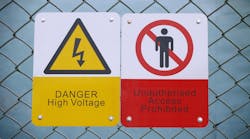Dreamstime_kiosk88generated_by_ai_11195757
Lesser-Known High-Voltage Methods: From X-rays to Offshore Wind Farms (Download)
April 8, 2024
The International Electrotechnical Commission (IEC) definition of high voltage (HV) is any voltage from 1 to 100 kV for AC systems and 1.5 to 100 kV for DC systems. The term "HV" may also refer to voltages that can be as low as 50 V for some safety regulations, depending on the context. A good example is defined by the U.S. Occupational Safety and Health Administration (OSHA) guidelines: HV can be 600 V or higher.
Comments
Comments
